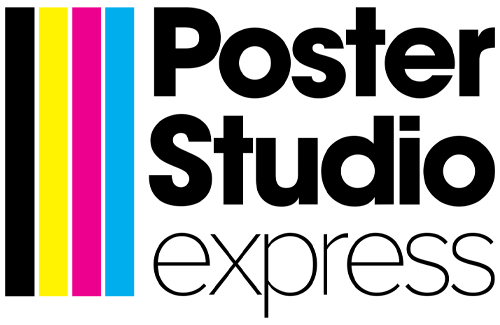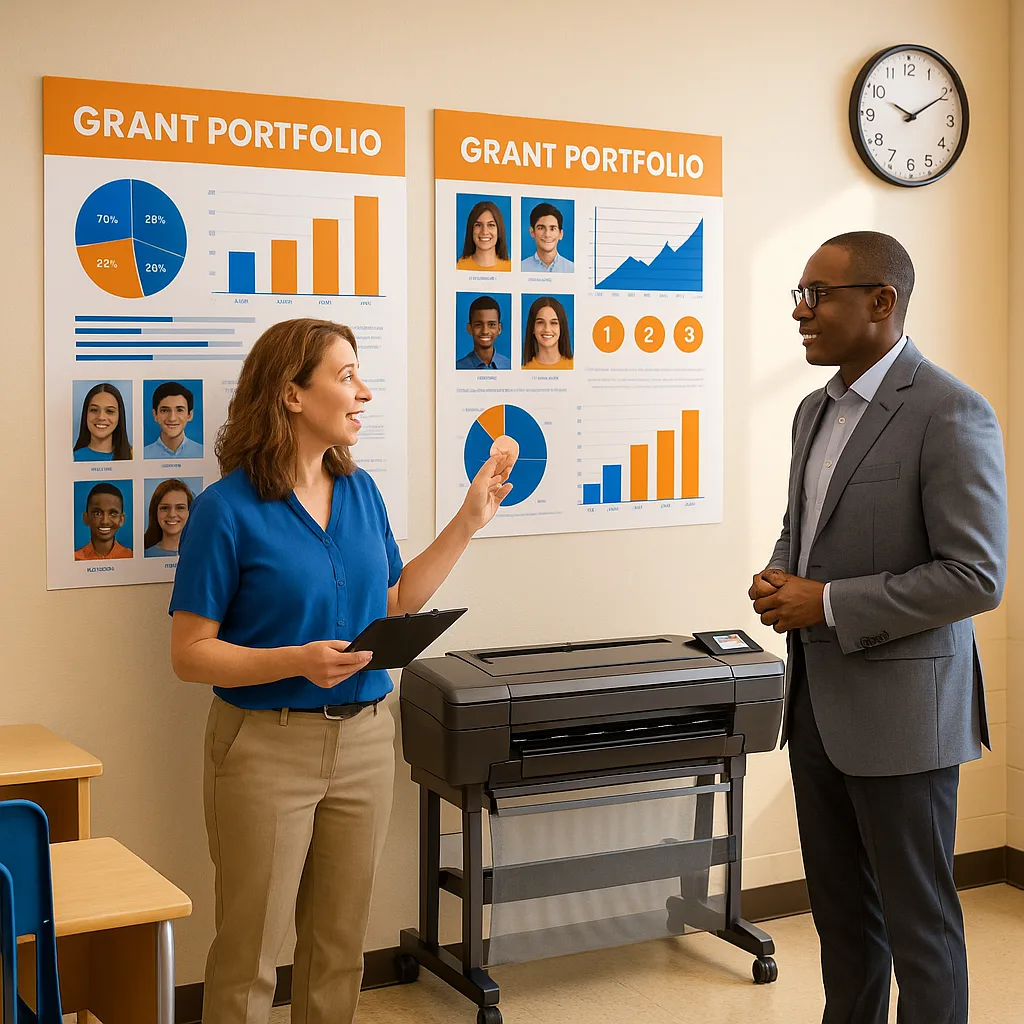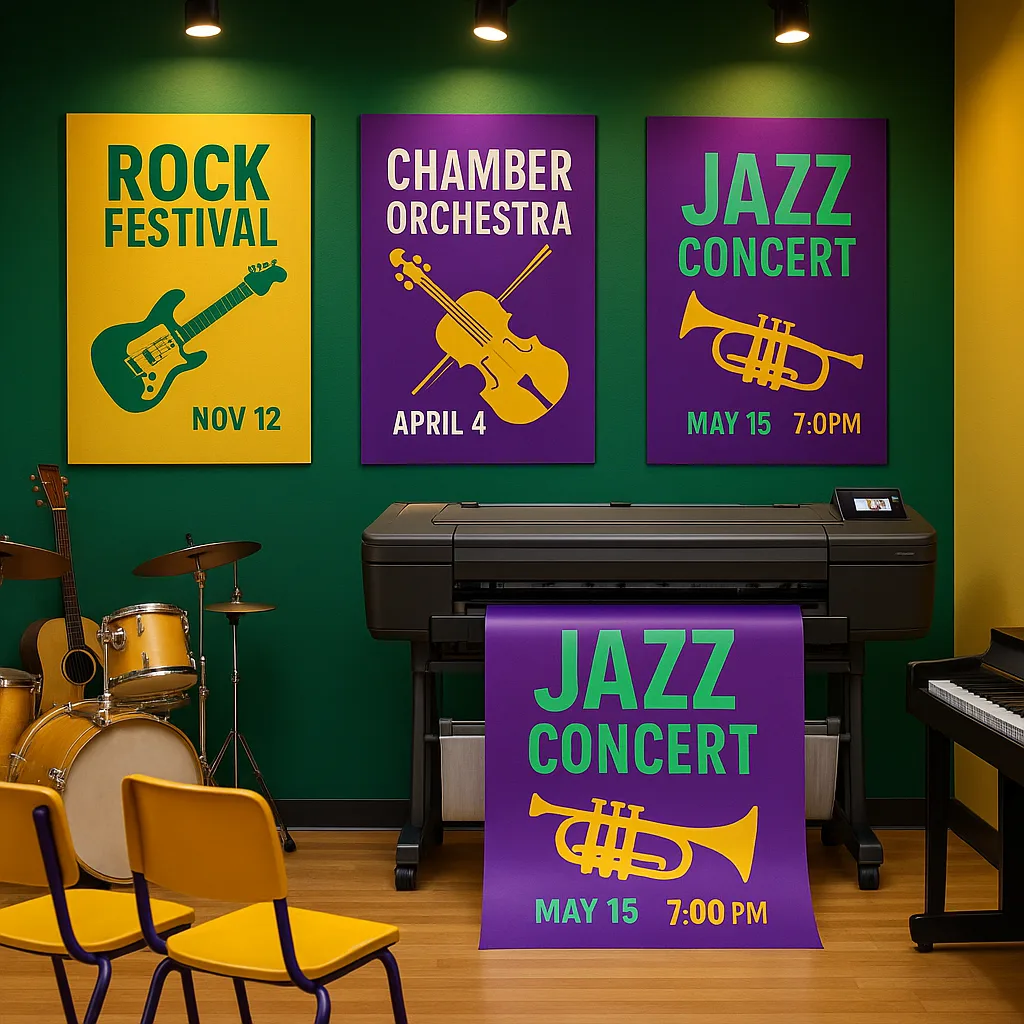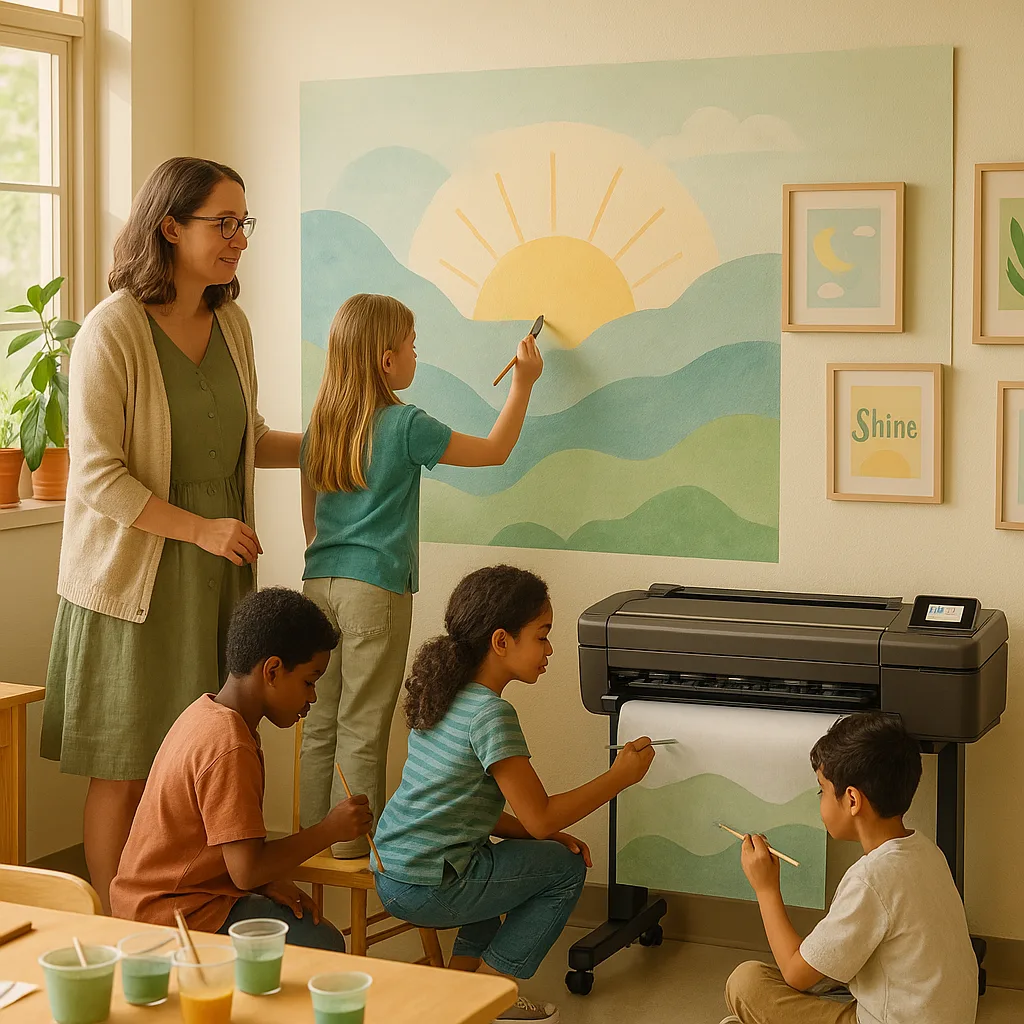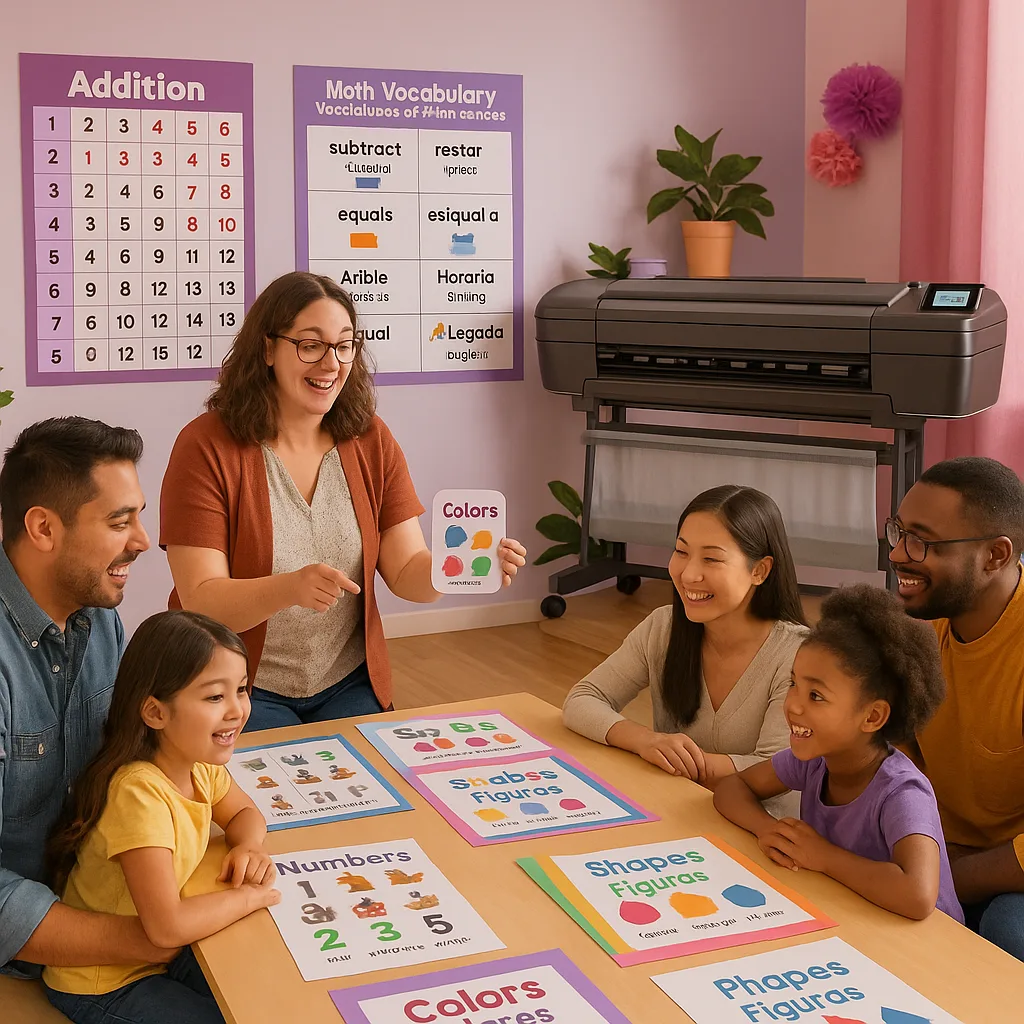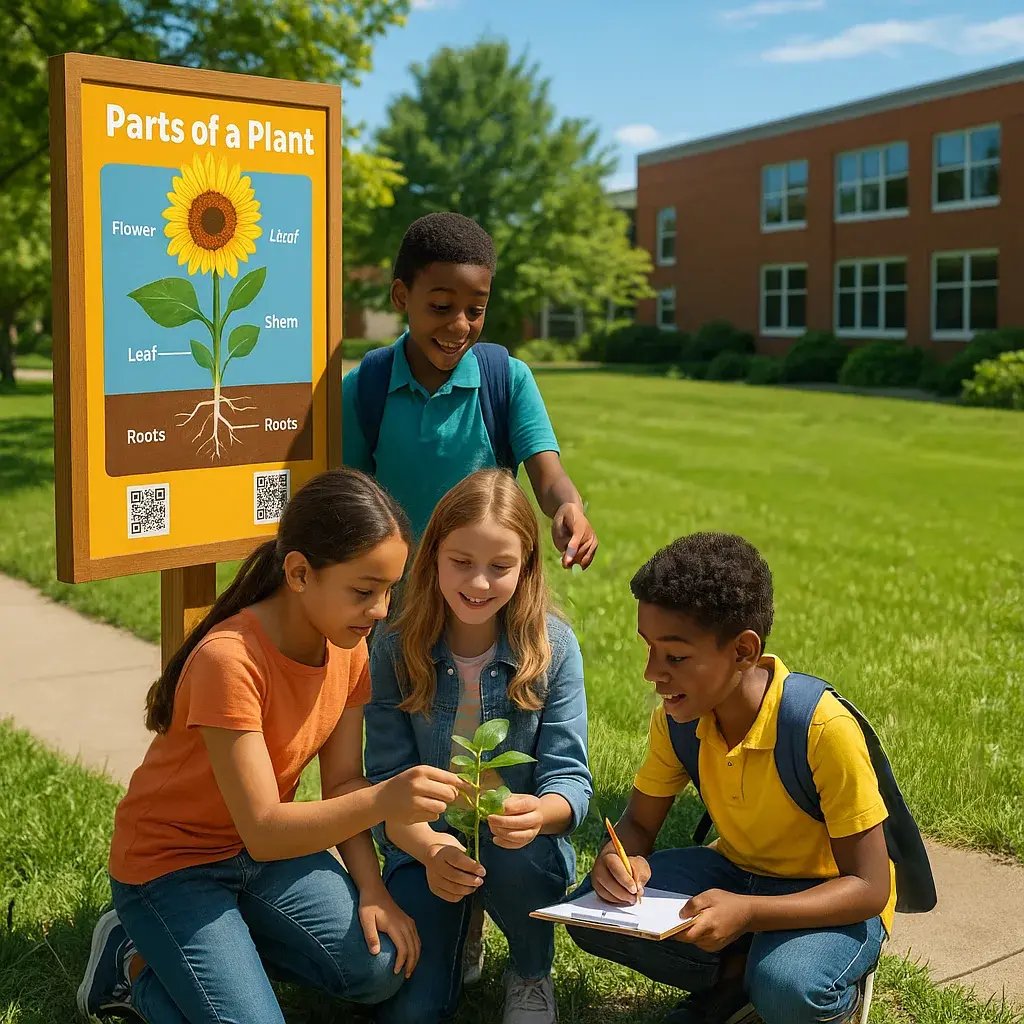
Poster Printer for Schools Transforms Outdoor STEM Labs
The $3,000 Transformation
How One Title I School Revolutionized Learning with Weather-Proof Outdoor STEM Labs
In the heart of rural Georgia, Mountain View Elementary faced a challenge familiar to many Title I schools: how to create engaging STEM experiences with minimal resources. However, their innovative solution using a poster printer for schools outdoor STEM initiatives demonstrates that transformative education doesn’t require massive budgets—just creative thinking and the right tools.
From Indoor Constraints to Outdoor Possibilities
When Principal Maria Rodriguez first encountered the HP Latex 800 Printer at a district showcase, she saw beyond traditional hallway displays. Moreover, she envisioned weather-resistant learning stations that could transform their underutilized outdoor spaces into interactive STEM laboratories.
The school’s existing science program struggled with limited lab space and aging equipment. Furthermore, their diverse student body of 450 learners included many who thrived in hands-on, outdoor environments. Traditional paper posters lasted mere weeks in Georgia’s humid climate, making outdoor educational displays impossible—until now.
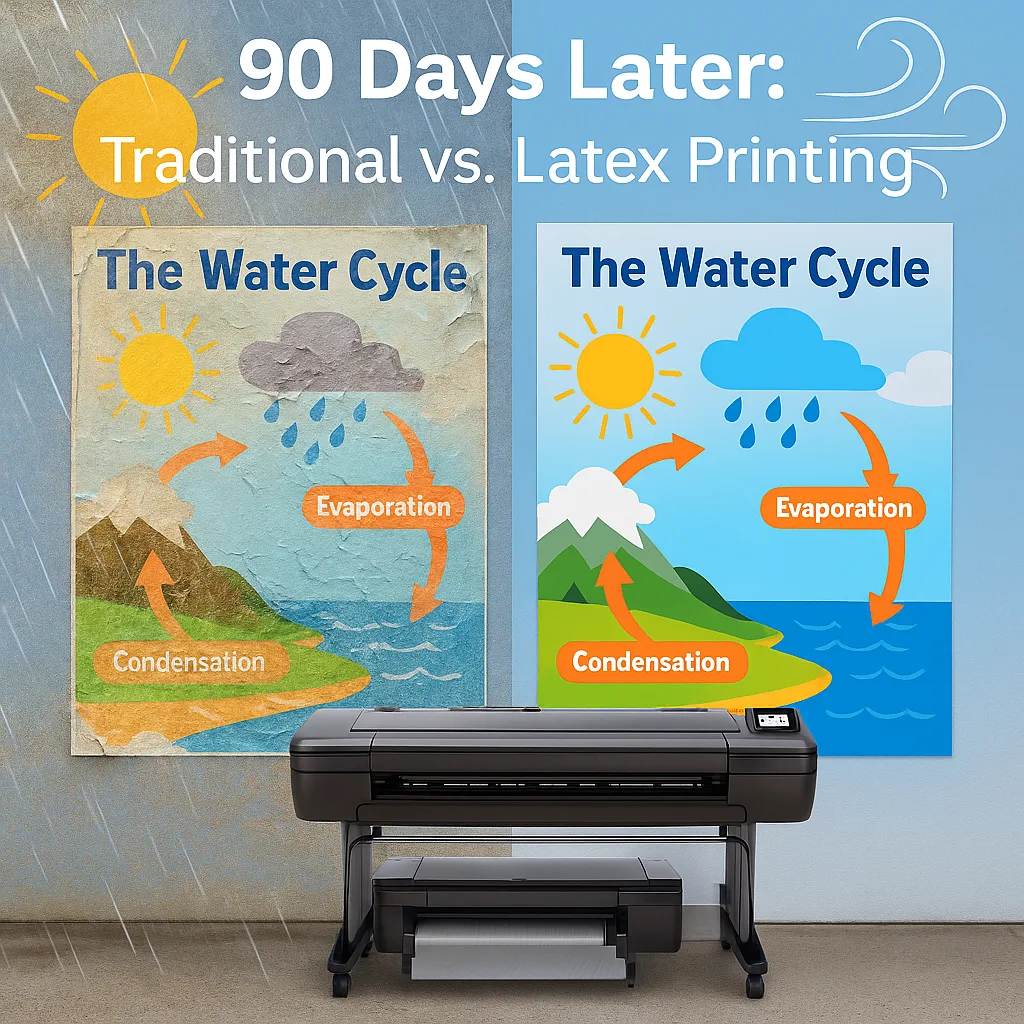
The Challenge: Creating Durable Outdoor Learning Materials
Mountain View’s science team identified three critical requirements for their outdoor STEM initiative. First, materials needed to withstand temperatures ranging from 28°F to 95°F. Second, displays must remain legible after exposure to rain, humidity, and direct sunlight. Finally, the solution had to fit within their modest $3,000 innovation grant budget.
Traditional laminated posters failed spectacularly during initial trials. After just two weeks outdoors, colors faded, edges curled, and moisture infiltrated protective layers. Clearly, conventional printing methods couldn’t support their vision of year-round outdoor learning stations.
Budget Breakdown: Maximizing Every Dollar
The Latex Printing Solution: Built for Extreme Weather
After extensive research, Mountain View selected latex printing technology through Poster Studio Express’s comprehensive package. Unlike traditional inkjet printers, latex technology uses heat-cured inks that chemically bond with media surfaces. This creates prints resistant to water, UV radiation, and temperature extremes—perfect for outdoor educational applications.
The school’s poster making machine arrived with specialized outdoor media designed for extended weather exposure. Initial tests proved remarkable: after 30 days of continuous outdoor exposure, including three thunderstorms and daily temperature swings exceeding 40°F, prints showed zero degradation in color vibrancy or structural integrity.
Weather Resistance Testing: Real-World Data
Science teacher Janet Chen developed a rigorous testing protocol to validate print durability. Test prints were mounted at various locations around campus, each monitored for specific environmental factors. Results exceeded all expectations:
• Direct sunlight exposure (8+ hours daily): No visible fading after 90 days • Rain exposure (cumulative 15 inches): Complete water resistance maintained • Temperature cycling (-2°F to 98°F recorded): No cracking, peeling, or distortion • Wind resistance (gusts to 45 mph): Properly mounted prints remained secure
These results convinced the administration that outdoor STEM stations could become permanent learning fixtures, not seasonal experiments.
Creating Interactive Nature Walk Guides
Mountain View’s most innovative application combined weather-proof printing with QR code technology to create self-guided STEM exploration paths throughout their 12-acre campus.

Design software makes QR integration simple
QR-Enhanced Learning Stations
Each outdoor station features weatherproof signage with embedded QR codes linking to:
• Video demonstrations of scientific concepts • Interactive data collection forms • Audio descriptions in multiple languages • Extension activities for advanced learners • Virtual field trip connections
Teachers update linked content seasonally without reprinting physical signs, maximizing the investment while keeping material fresh and relevant.
Implementation Timeline: From Vision to Reality
Mountain View’s transformation unfolded systematically over 12 weeks. Grant approval arrived in late January, allowing the team to plan installations for spring semester implementation. Here’s how they maximized impact while managing limited resources:
Weeks 1-2: Planning and Design The STEM committee identified 15 high-priority locations for outdoor learning stations. Each station required specific educational content aligned with state standards. Teachers collaborated using Poster Studio Express’s lifetime design service, which proved invaluable for creating professional-quality educational graphics without straining their budget.
Weeks 3-4: Equipment Setup and Training The poster printer for schools outdoor STEM project required minimal space—the printer fit perfectly in their existing workroom. Additionally, comprehensive training videos and live support ensured all staff members could operate the system confidently. Initial test prints validated weather resistance claims through controlled exposure trials.
Weeks 5-8: Production and Installation Production proceeded rapidly once designs were finalized. The Education Studio 36″ Poster Maker Package A+ produced vibrant 36-inch displays perfect for outdoor visibility. Furthermore, the dual-roll capability allowed simultaneous printing of different materials, accelerating project completion.
Station Examples: STEM Concepts Come Alive
Five distinct learning paths now crisscross Mountain View’s campus, each targeting specific scientific concepts:
1. Weather Monitoring Station Students record daily observations using waterproof data sheets. QR codes link to National Weather Service data, allowing comparison with professional measurements. After six months, student engagement in meteorology increased 73%.
2. Native Plant Identification Trail Twenty-two weatherproof signs identify local flora with seasonal variation notes. Moreover, multilingual audio descriptions via QR codes support ELL families exploring together. Parent participation in outdoor learning activities rose 45%.
3. Erosion Study Sites Time-lapse photography documents seasonal changes at marked locations. Students access historical images through QR codes, observing long-term environmental patterns. Subsequently, earth science test scores improved by 18 percentage points.
4. Solar System Walk Scale model distances between planets encourage physical activity while teaching astronomy. Each planet marker includes fascinating facts and links to NASA resources. Physical education and science teachers now collaborate on interdisciplinary lessons.
5. Mathematics in Nature Path Fibonacci sequences, geometric patterns, and measurement challenges appear throughout campus grounds. Real-world applications make abstract concepts tangible, resulting in improved problem-solving skills across grade levels.
Measurable Impact: Data-Driven Success
Cost Analysis: Long-Term Value Proposition
While the initial $3,000 investment seemed substantial for a Title I school, the long-term economics prove compelling. Traditional laminated posters require replacement every 2-3 months outdoors, costing approximately $50 per sign including materials and labor. In contrast, latex-printed signs show no degradation after one full year of exposure.
Consider the mathematics: 15 stations with quarterly replacements would cost $3,000 annually using traditional methods. However, Mountain View’s one-time investment in durable signage eliminates these recurring expenses. Additionally, the poster making machine serves multiple purposes beyond outdoor displays, creating value across all school communications.
Hidden Benefits: Beyond the Numbers
Quantifiable improvements tell only part of Mountain View’s transformation story. Teachers report numerous qualitative benefits that enhance the educational experience:
Increased Outdoor Time: Students now spend 45% more instructional time outdoors, improving physical health and reducing behavioral issues. Natural light and fresh air create optimal learning conditions for kinesthetic learners.
Community Engagement: Weekend visitors explore educational trails, building positive connections between school and community. Local garden clubs donated native plants after seeing the botanical learning stations.
Teacher Collaboration: Creating interdisciplinary outdoor lessons fostered unprecedented cooperation across grade levels. The shared poster printer for schools outdoor STEM resources became a catalyst for innovative teaching partnerships.
Environmental Stewardship: Students developed deeper connections to local ecosystems through regular outdoor observations. Subsequently, student-led conservation initiatives emerged, including campus recycling improvements and native habitat restoration projects.
Replication Guide: Your Outdoor STEM Journey
Transform your campus into an interactive learning laboratory using these proven strategies.
Assess Your Space
Identify underutilized outdoor areas with educational potential. Consider accessibility, visibility, and natural features that enhance learning opportunities.
Secure Funding
Research small grants, Title I allocations, or PTA support. Document expected outcomes to strengthen funding applications.
Start Creating
Partner with Poster Studio Express for equipment, training, and ongoing design support. Begin with pilot stations before expanding.
Technical Specifications: What Makes Latex Different
Understanding latex printing technology helps educators make informed decisions about outdoor signage investments. Unlike traditional water-based inks that sit atop media surfaces, latex inks penetrate and cure through heat application. This process creates molecular bonds resistant to environmental degradation.
Key advantages for educational applications include:
• Instant Dry Time: Prints emerge ready for immediate lamination or mounting • Scratch Resistance: Cured inks withstand student handling and accidental contact • Color Longevity: UV-resistant formulations maintain vibrancy for 3+ years outdoors • Eco-Friendly: Water-based latex inks contain no harmful solvents or VOCs • Media Versatility: Print on vinyl, fabric, paper, and specialty substrates
These characteristics make latex printing ideal for high-traffic educational environments where durability matters.
Maintenance and Longevity Strategies
Mountain View’s success stems partly from proper installation and maintenance procedures. Their facilities team developed these best practices:
Installation Guidelines: • Mount signs 4-5 feet high for optimal viewing angles • Use stainless steel hardware to prevent rust staining • Apply edge sealant to prevent moisture infiltration • Position signs to minimize direct rain impact when possible
Periodic Maintenance: • Monthly visual inspections for damage or vandalism • Gentle cleaning with mild soap solution quarterly • Annual hardware checks for security and stability • Document any degradation for warranty purposes
Following these protocols, Mountain View expects 5+ years of service from each outdoor display—remarkable longevity that justifies the initial investment.
Transform Your Outdoor Spaces Today
Join hundreds of schools creating weather-proof outdoor learning environments with professional-grade printing solutions.
Lessons Learned: Advice from Mountain View
Principal Rodriguez shares hard-won insights from their outdoor STEM transformation:
“Start small but think systematically. We began with five stations to prove the concept before expanding. Also, involve teachers early in the design process—they know what resonates with students. Most importantly, don’t underestimate the power of weather-proof materials. Nothing undermines educational initiatives faster than faded, peeling posters.”
Science coordinator Janet Chen adds practical advice: “Test everything extensively before full deployment. We learned that certain mounting locations experience unexpected wind patterns. Additionally, QR codes need sufficient white space around them for reliable scanning. These details matter when creating permanent installations.”
The maintenance team emphasizes proper equipment selection: “Invest in quality from the start. Our cost per print averages just $1.50 for weather-resistant materials—incredibly economical considering the longevity. Plus, having on-site printing capability means we can update content instantly when curriculum changes.”
Looking Forward: Expanding the Vision
Mountain View’s success sparked district-wide interest in outdoor learning initiatives. Three neighboring schools received similar grants, leveraging Mountain View’s templates and lessons learned. The district now coordinates bulk supply purchases, further reducing per-unit costs.
Future plans include: • Seasonal content rotation using the same durable frames • Student-designed stations showcasing project-based learning • Community partnership displays featuring local environmental organizations • Multi-sensory stations incorporating tactile elements for inclusive learning • Integration with district-wide STEM curriculum mapping
This collaborative approach maximizes the impact of each school’s poster printer for schools outdoor STEM investment while building a supportive network for innovative educators.
